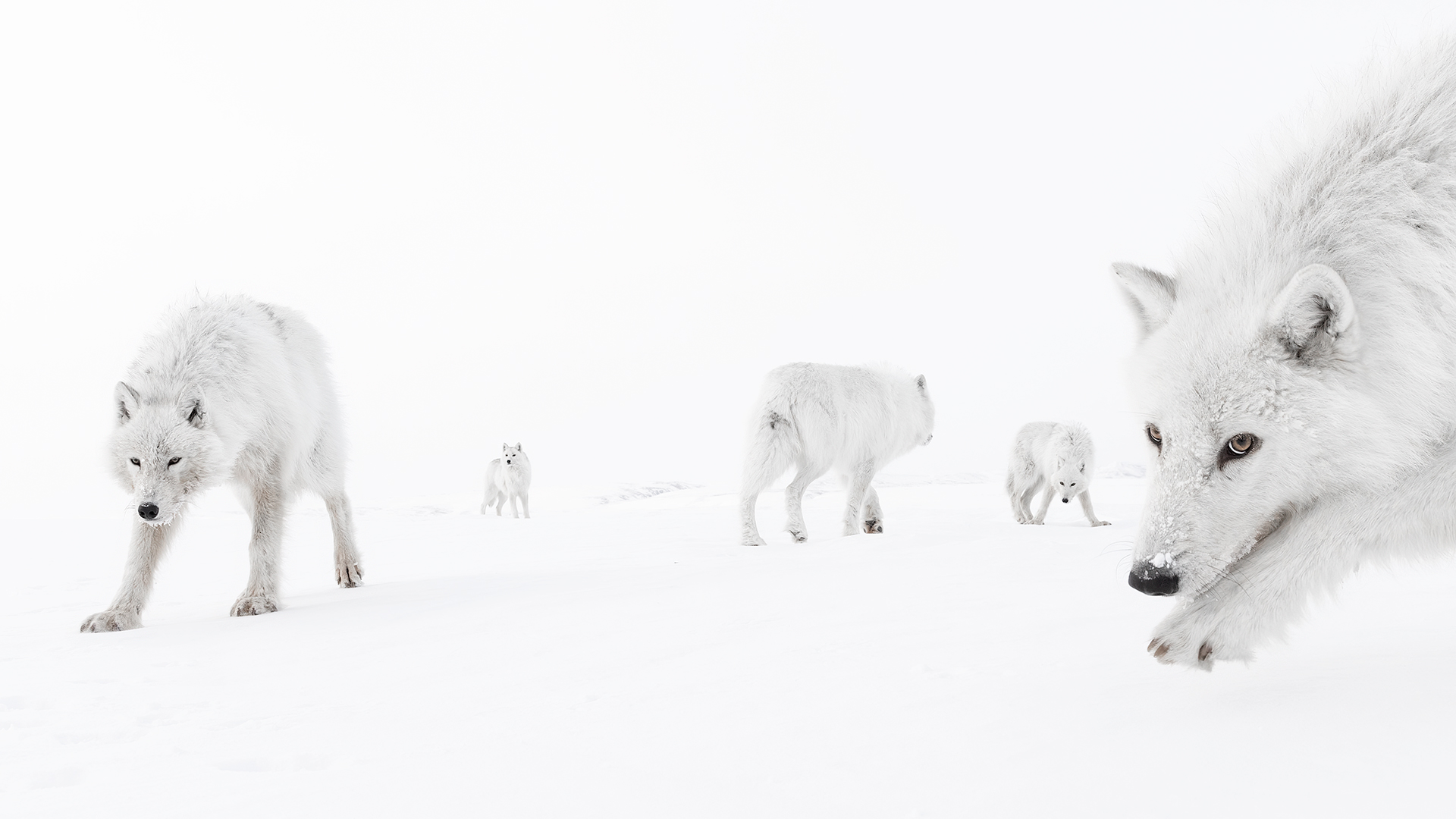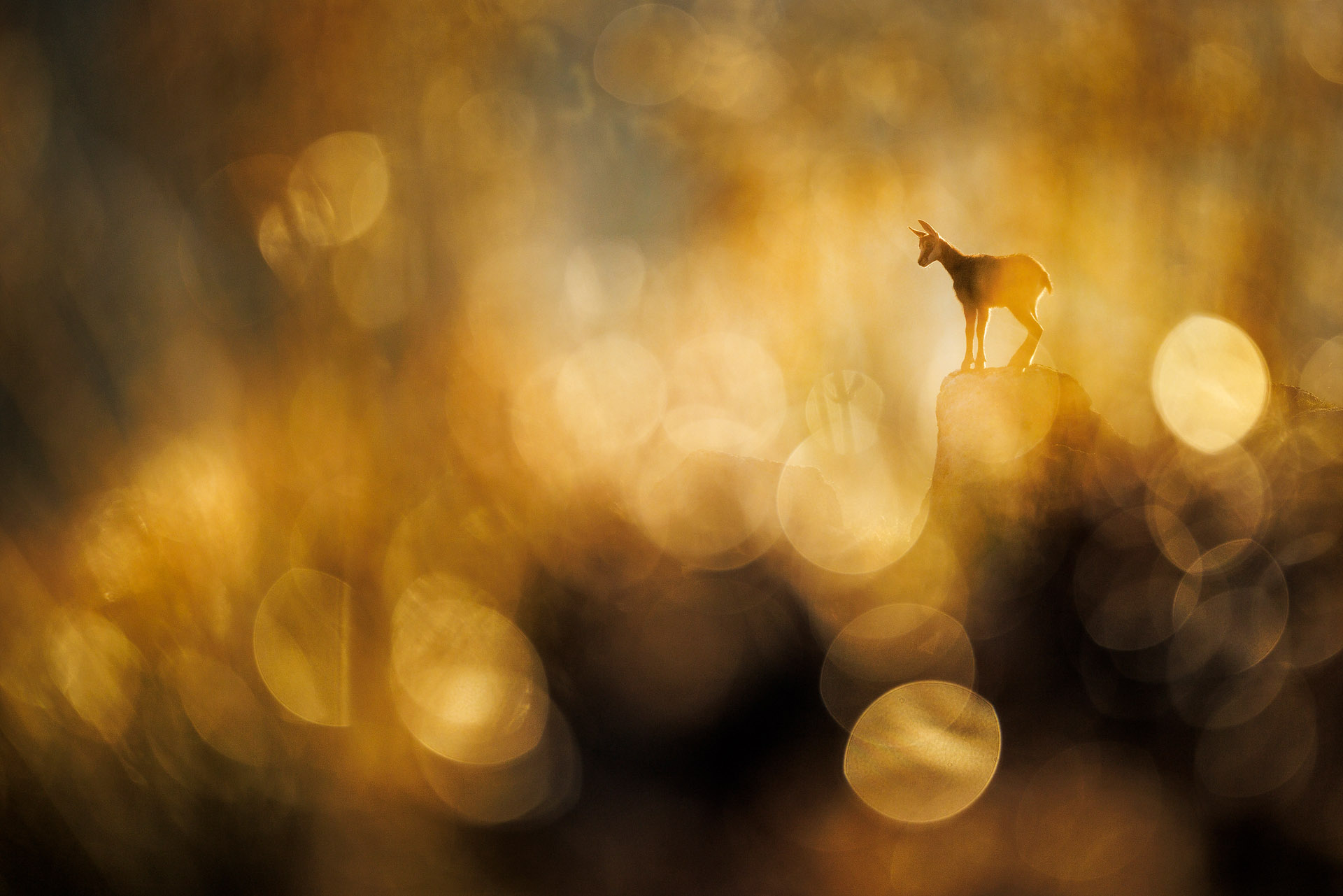GALLERY MONTPHOTO 2025
Mammals
Lunch escaped de Jing Shi de Daxing District, Beijing (Beijing)
Place: Haiyan County, altiplà de Qinghai (Xina)
Description:
The picture was taken on the grasslands of the Qinghai Tibet Plateau. Tibetan foxes (Vulpes ferrilata) and pikas (Ochotona sp.)are very common predators and preys here. They perform killings and escapes every day. I noticed a Tibetan fox hunting, so I slowly approached and took this photo at the moment when a fox was hunting a pika.
On the way home de Tibor Litauszki de Kiskoros ()
Place: Stein (Alemanya)
Description:
The photo was taken with multiple exposures. In one exposure, I captured the bat (Myotis sp.) with a strobe flash and manual focus. Sometimes I managed to get a picture where the bat was in focus and its flight path was clearly visible. For the second exposure, I placed the camera inside the tree and took another shot from there. The final result is a combination of the two exposures.
Leopard's gaze de Mateusz Piesiak de Wrocław (Wroclaw)
Place: Zàmbia
Description:
This image shows a leopard (Panthera pardus) moments after spotting two impalas engaged in a fight. Sensing an opportunity, it begins a silent, focused approach. The intensity in its eyes reflects the raw instinct of the wild — a fleeting moment of predator and chance.
Ephemeral symmetry de Francesco Guffanti de La Thuile (Valle d'Aosta)
Place: Vall d'Aosta, Alps occidentals (Itàlia)
Description:
The frenetic Ermine (Mustela erminea) interrupts his hunt for a moment to give me this shot. Posing next to two European larch branches (Larix decidua), he composes a symmetry that lasts the blink of an eye. Just enough time for a shot and off again in search of voles under the thick blanket of snow. Who knows for how many more winters the snow will camouflage his white coat from the eyes of predators?
Behind the Window de Matthias Hüther de Lauf an der Pegnitz ()
Place: Alemanya
Description:
A wood mouse (Muridae) behind the window of an old, dilapidated fishing hut. I photographed it there all winter with an infrared sensor. Every evening I set up the camera and picked it up again at sunrise - day after day. A few times I was lucky enough for the mouse to appear, but it took a lot of shots before I was really happy with the composition.
Inside The Pack de Amit Eshel de KFAR HAHORESH ()
Place: Illa Ellesmere (Canadà)
Description:
Arctic Wolves (Canis lupus arctos). Maybe this image somewhat manages to convey the feeling of being surrounded by a pack of Arctic Wolves in the wild, a completely surreal experience! The Wolves slowly and carefully came over very closely out of natural curiosity, at times they were so close they almost touched me. It really moved me to experience such a intimate meeting in a truly wild and pristine place.
Chamois de Radomir Jakubowski de Saarbrücken ()
Place: Vosges (França)
Description:
The Alpine chamois (Rupicapra rupicapra) is a fascinating species native to the Vosges. These agile climbers thrive in the rocky and steep regions of the High Vosges, where their strong legs and specialized hooves allow them to navigate even the most challenging terrain effortlessly. Chamois were not originally native to the Vosges but were successfully reintroduced in the 1950s. Today, stable population
Rules of the web site | Legal advice | Privacy statement | Cookies policy | Change cookies preferences
Administration | Web design: ATMultimedia.com

.jpg)
.jpg)
.jpg)
.jpg)
.jpg)





